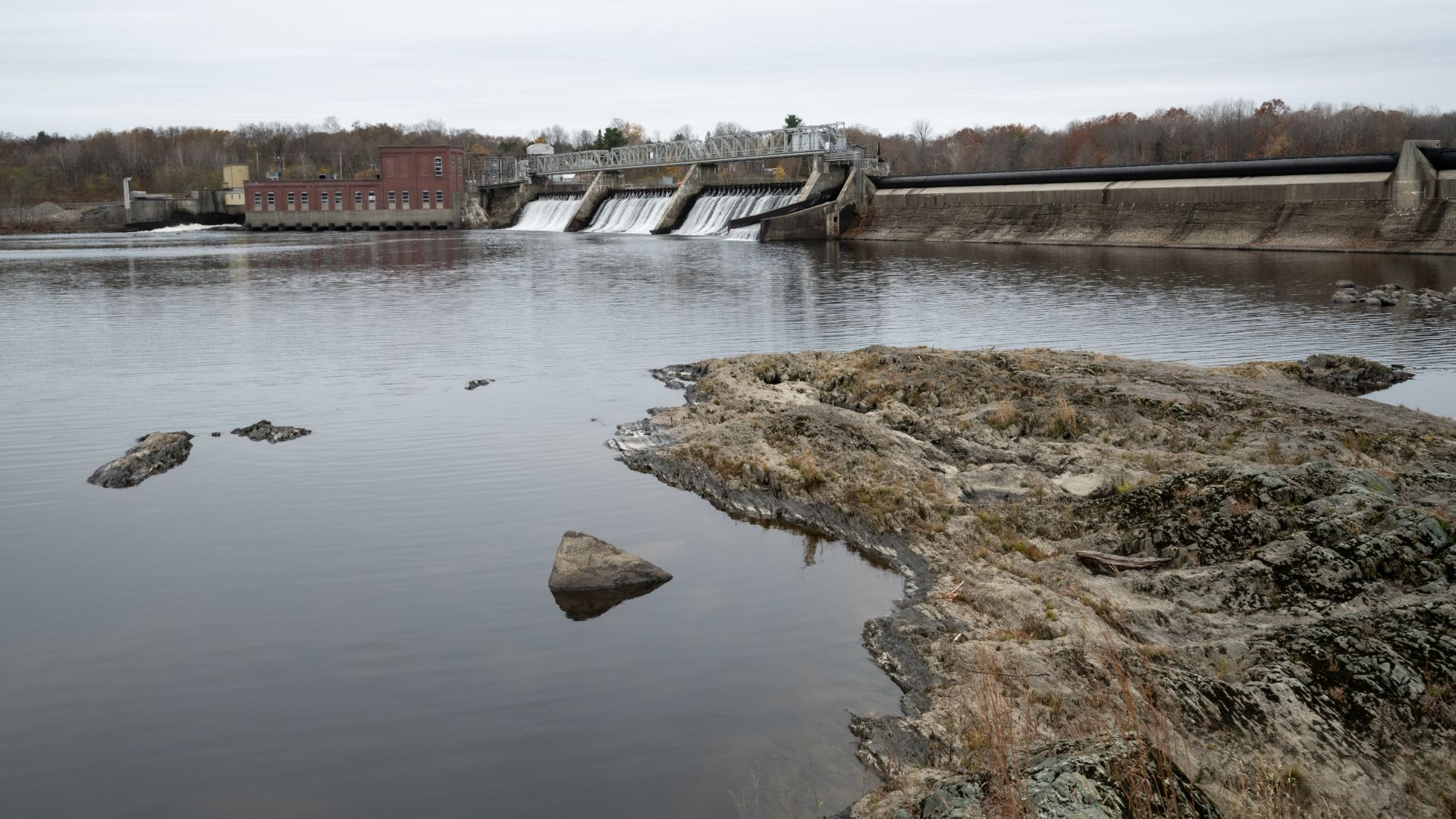A three-part series recently published by The Maine Monitor explored the future of Maine’s deteriorating dams as they face growing threats from climate change and fall out of favor for public investment.
With the average Maine dam built over a century ago, more and more dam owners have to confront what to do with these deteriorating structures, while state regulators have little power or funding to enforce their own rules.
Here are four takeaways:
A linchpin of renewable energy in Maine
For decades, hydroelectric dams have provided Maine with a steady, reliable source of renewable electricity.
In 2023, Maine’s 51 hydroelectric plants generated 726 megawatts of fossil fuel-free electricity, roughly 31 percent of the state’s overall electricity generation and around 47 percent of its renewable generation.
State officials are counting on hydro to continue this baseline output to meet future renewable energy goals, but as the structures age and face stringent requirements for fish passage, their continued operations depend on their profitability.
Hydroelectricity is out, wind and batteries are in
Renewable energy sources provided 65 percent of Maine’s in-state electricity generation in 2023, and the state is betting that it will fill the gap between its goal of 80 percent renewable generation by 2030 with a broad expansion of wind and solar power.
Separate legislative mandates direct the state to develop 3,000 megawatts of offshore wind capacity by 2040 and 750 megawatts of small-scale energy developments (namely solar arrays), dwarfing hydro’s contributions.
But like hydro, wind and solar are facing their own setbacks.
Maine was passed up for a $456 million federal grant that would have covered most of the costs for a planned port in Searsport to assemble turbines; last month, a federal auction for offshore wind leases in the Gulf of Maine solicited meager interest.
Solar, meanwhile, has fallen victim to municipal moratoria across the state, while developers are also dealing with high costs and long lines to connect their solar projects to the state’s electrical grid.
As dams deteriorate, safety enforcement lags
Of the 590 Maine dams tracked in a federal dam database, 62 are considered to be in poor condition and have some sort of safety deficiency, while 15 are deemed unsatisfactory and require more immediate maintenance.
Ten of the fifteen unsatisfactory dams are also labeled high hazard, meaning they could put the lives of downstream residents at risk if they fail.
The Maine Dam Safety Program is understaffed, with just two engineers to oversee the state-regulated dams, and underfunded, yet it is still meeting deadlines to inspect the more than 500 Maine dams under its jurisdiction.
The program does not receive any direct appropriations from the state legislature and does not collect any fees. In 2021, it received a meager $67,241 through its primary federal grant — at least $200,000 less than it needed, according to an internal report, and had to borrow from funds elsewhere.
The agency rarely follows up on its repair recommendations and does not take enforcement actions when dam owners are out of compliance, meaning the program does not compel private dam owners to maintain even the most dilapidated, dangerous dams.
Concerns over Maine’s toothless dam regulations are rising in the face of more frequent, intense precipitation events brought about by climate change, which the Maine Dam Safety Program doesn’t account for.
‘A massive undertaking’
Dams are regulated at both the state and federal level. In recent years, decisions over relicensing have become increasingly controversial, as communities weigh competing interests of nearby residents, fish passage advocates and dam owners.
With a number of federal hydroelectric licenses set to expire and smaller, state-regulated dams requiring immediate action, many advocates see an opportunity to shape the future of these waterways for decades to come.
Numerous dams on the Kennebec River and Penobscot River are going through relicensing for the first time in decades, giving the public an opportunity to sway federal officials and impose fish passage and water quality protections on some of the state’s largest dams, like the Ripogenus Dam and Penobscot Mills Project on the West Branch of the Penobscot River.
Planned fish passways and a recent dam removal on the Schoodic River show what a coalition of Wabanaki officials, the state, and nonprofits can accomplish, even if the pace isn’t as fast as removal advocates would like.
The decisions can be divisive: Earlier this year Dover-Foxcroft voters narrowly opted to keep the dam at the heart of downtown, despite the high maintenance costs. Camden, meanwhile, could face a similar future as it reckons with whether to remove a downtown dam.
Federal decisions on hydroelectric dams — and their environmental consequences — stand for decades.
“It’s a massive undertaking,” said McCaw, the Penobscot Nation fisheries director, of the current dams up for relicensing, “and will have ramifications past my lifetime.”







